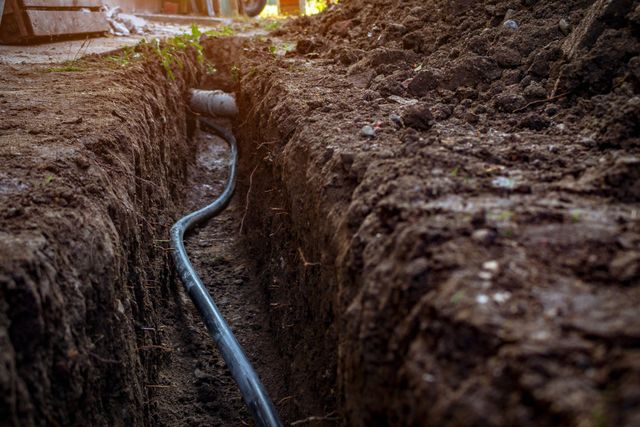Presented here below yow will discover a lot of high-quality points on the subject of Plumbing Basics Every Homeowner Should Know.

Plumbing is a necessary aspect of any home, in charge of providing tidy water for alcohol consumption, cooking, and bathing, as well as getting rid of wastewater securely. Understanding the basics of home plumbing is important for each house owner to make certain proper upkeep, troubleshooting, and, if needed, repair work. In this beginner's overview, we'll cover the essential concepts of home plumbing to assist you end up being much more accustomed to just how it works.
Water System System
The water system brings tidy water right into your home from a municipal water resource or a personal well. It contains a major water line that links to your home's plumbing system, normally situated underground. A water meter determines the quantity of water eaten, while a shut-off valve permits you to regulate the flow of water right into your home.
Plumbing Components
Plumbing components are tools that provide water to various parts of your home and include sinks, taps, bathrooms, showers, bathtubs, and devices such as dishwashers and cleaning devices. Each fixture is attached to the supply of water system via pipes and installations and may have its shut-off shutoff for upkeep or emergencies.
Water Furnace
The water heating unit is in charge of heating water for residential usage, including showering, food preparation, and cleansing. Common kinds of hot water heater include tank-type water heaters, tankless (on-demand) hot water heater, and heatpump water heaters. The hot water heater is attached to the supply of water system and delivers warm water to plumbing components as required.
Drainage System
The drain system gets rid of wastewater from your home and carries it away to a sewage treatment center or septic system. It contains a network of pipelines, fittings, and fixtures that carry wastewater from plumbing components to the major sewer line or sewage-disposal tank. Appropriate drain is important to protect against clogs, backups, and sewer leaks.
Ventilation System
The air flow system helps preserve appropriate atmospheric pressure and prevent sewer gases from entering your home. Air vent pipelines, also known as air vent heaps, prolong from plumbing components to the roof, permitting sewage system gases to leave securely outside. Ventilation pipelines also enable air to enter the drain system, helping with smooth wastewater circulation and protecting against suction or vacuum cleaner results.
Usual Plumbing Devices
Having the right tools on hand is vital for doing fundamental plumbing repair services and upkeep jobs. Typical plumbing tools include adjustable wrenches, monkey wrench, pliers, pipeline cutters, hacksaws, bettors, augers (or drainpipe snakes), and Teflon tape. Having these tools readily offered can assist you deal with minor plumbing concerns successfully.
Fundamental Plumbing Repair Services
While some plumbing fixings might need professional assistance, many usual issues can be addressed with standard do it yourself techniques. Learning just how to take care of a leaking faucet, unblock a drain, replace a toilet flapper, or fix a leaking showerhead can save you money and time on plumbing repair services.
Final thought
Understanding the essentials of home plumbing is crucial for each homeowner to preserve a safe, useful, and effective plumbing system. By familiarizing on your own with the supply of water system, plumbing components, drain system, air flow system, common plumbing devices, and basic fixings, you can confidently resolve minor plumbing concerns and ensure your home's plumbing system runs smoothly.
Understanding Basics of Home Plumbing System: A Beginner's Guide
The Main Components of Your Home Plumbing System
The Water Supply System
This system is responsible for transporting fresh water into your home. It usually has a main water line that splits into two branches: one directed towards cold water services and the other connected to a water heater for hot water. The pressure is key here; it ensures water reaches all parts of your house.
The Drainage System
Once water has been used, it becomes wastewater that needs to be removed from your home. This is where the drainage system comes into play. It includes all the pipes that carry wastewater and sewage away from your house to sewage treatment facilities or septic tanks.
The Vent System
The vent system prevents sewer gases from entering your home and helps maintain the pressure balance that allows wastewater to flow out properly. These vents usually exit through the roof of your house.
Water Heating System
For those who enjoy hot showers or using hot water for cleaning, the water heater is a crucial part of the plumbing system. It can be a tankless system, which heats water on demand, or a traditional water tank model.
Common Plumbing Problems and Basic Troubleshooting
Plumbing systems, while designed to be durable, can face issues like clogged drains, leaky faucets, or low water pressure. Here are some basic troubleshooting tips:
Clogged Drains
Use a plunger or a plumber's snake to try and dislodge whatever is blocking the drain. Regular cleaning can prevent clogs.
Leaky Faucets
Often caused by worn-out washers or gaskets, these can usually be replaced by someone with basic DIY skills.
Low Water Pressure
This might be due to sediment build-up in your fixtures or a leak somewhere in your water line. Cleaning out aerators or seeking a professional to detect leaks might be necessary.
Preventive Maintenance Tips
Maintaining your plumbing system is key to avoiding emergencies. Regularly check for leaks, avoid disposing of grease down the sink, and have your system inspected by a professional plumber at least once a year.

I discovered that piece about What to Know About Plumbing: Basics, Tips, and Insights while browsing on the internet. If you please take a moment to promote this blog post if you appreciated it. I enjoy reading our article about .
Call